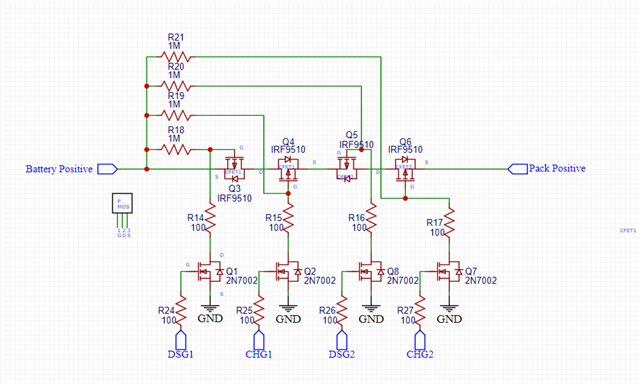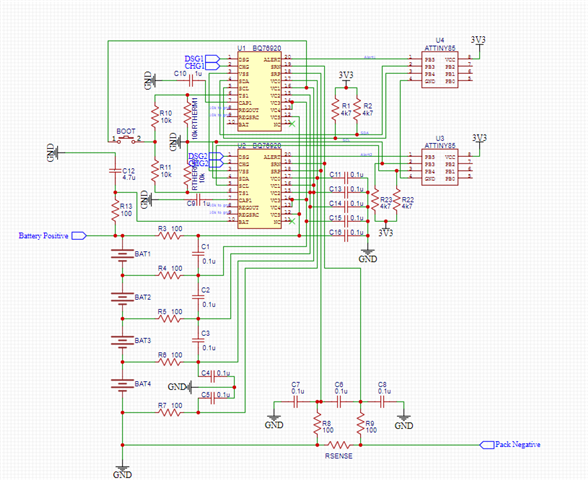Hello,
I have been working with the BQ76920 and have very much appreciated all its functionalities. I am designing a BMS for a 12V 100aH battery pack, and I wanted to ask would there be any issues if I use two of these ICs as a means of redundant protection? Each chip will have its own supporting circuitry, the only difference would be that they would control their own set of CHG and DSG Mosfets.
I have modified the circuit to allow for High side driving using p-channel Mosfets, and the Mosfet pairs are put in series so that if a fault is detected from either AFE it will disable the fets.
Here is the circuit for the mosfets:

Additionally I have been testing whether each chip needs its own supporting circuitry or if i can use the same components to support both chips. For example, I connected all VC0 to VC5 pins together, and then wired individual cables to the filtered outputs of the cells.
Here is the circuit, please note not all the connections have been drawn, this is just to let you understand what Im trying to do with the chip.

So with all that said, Is there any issues with my approach? What would stop one from trying this method of redundant protection rather than looking at secondary protection ICs?
Any guidance here would be much appreciated.

